Forging is an ancient metal forging process. The majority of the farming tools needed, culinary utensils, and weapons were made by the blacksmiths using forging. This article gives a thorough comparison of forging vs casting and machining as well as a full discussion of the purposes and advantages of forging.
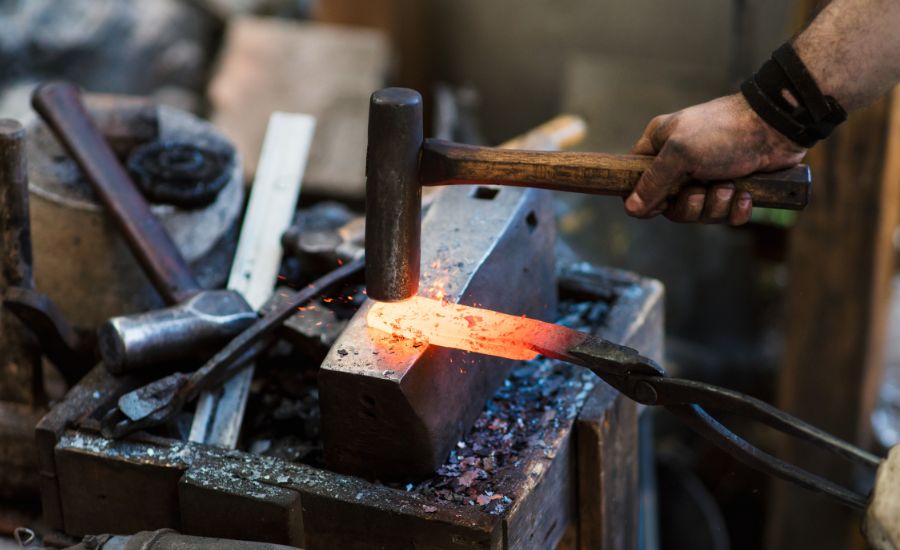
Contents
What is metal forging?
Metal forging is the technique of forming and shaping metals by applying compressive pressure, either directly or with the use of metal forging machines. During metal forging, compressive pressures are used to improve sheet metal grain structure and distort the metal’s plastic state into the required geometric shape.
Temperatures for forging
Contemporary forging operations can be essentially divided into two categories: hot forging and cold forging.
Hot forging
The most common form of forging is the hot forging process. Compressive tensions are applied once the metal item has been heated over its recrystallization temperature.
Metals have improved ductility and lose some of their yield strength when heated, which lowers the impact forces required to disrupt the metal’s structure.
Furthermore, it leads to a quicker process and more accurate outcomes. It is necessary to have a hot furnace facility to heat metal objects to temperatures higher than 2000 degrees Fahrenheit.
The manufacturers may have to make a substantial investment, and it also increases workplace risks. This production process breaks up the cast’s coarse grain structure and replaces it with finer grains.
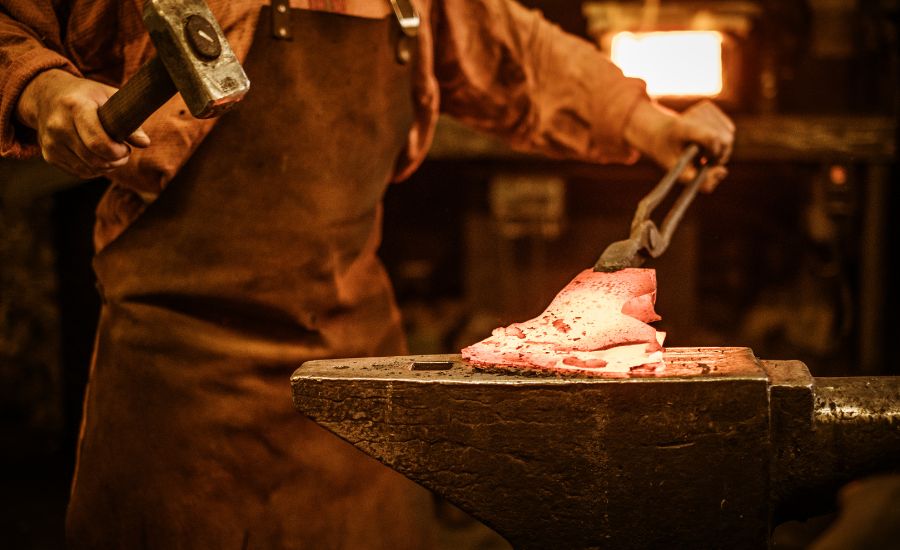
Cold forging
Through the use of this forging operation, forging may likewise be done at normal room temperature. In another variation known as warm forging, the metal is simply heated slightly over its recrystallization temperature. It produces items more accurately in terms of dimension and consistency of mechanical properties by omitting the heating stage.
Meanwhile, the absence of ductility also necessitates the use of greater compressive pressures. Work hardening, or the alteration in physical parameters brought on by the implementation of compressive stresses, is a phenomenon that is frequently seen in cold forged parts.
Hence, as a part is processed further, it gets more and more challenging. This forging process is not suitable for every type of metal. Iron and steel particularly must always be heated before forging. The forging process is used to create pieces primarily because it offers higher strength. This occurs as a result of internal grain structure distortion.
The metal’s grains distort and realign to the overall shape of the item as compressive pressures are applied, forging it into that shape. Manufacturers can benefit from this alignment of grain structure when creating pieces with the desired directional strength.
By eliminating internal voids and lowering gas porosity, improved mechanical properties can also be attained.
Types of forging operations
Drop forging
By abruptly dropping a hammer into the workpiece, compressive pressure is applied in this forging process. This is a quick procedure that can be employed for particular components of one workpiece, enabling a higher customization potential.
On the other hand, it is an uncontrollable technique.
Sometimes this forging process is followed by additional shaping procedures. In this forging process, the part is forced against a pre-formed die to achieve the desired shape. Either open die forging, in which case the component is only set atop an anvil, seamless rolled ring, or closed die forging, in which case the metal takes the form of an impression, can be used.
Employing closed die forging is the best method for producing durable, extremely accurate parts. Generally, the open forging process is performed to produce ingots or pieces for relatively low manufacturing.
Press forging
Compressive forces are exerted in this forging process. To mold metal into the desired shape, a die is usually used. The operator regulates the finished part’s mechanical properties by dispersing the force across a longer application duration. A portion with more consistent features is produced as a result of the more uniform application of the compressive pressures.
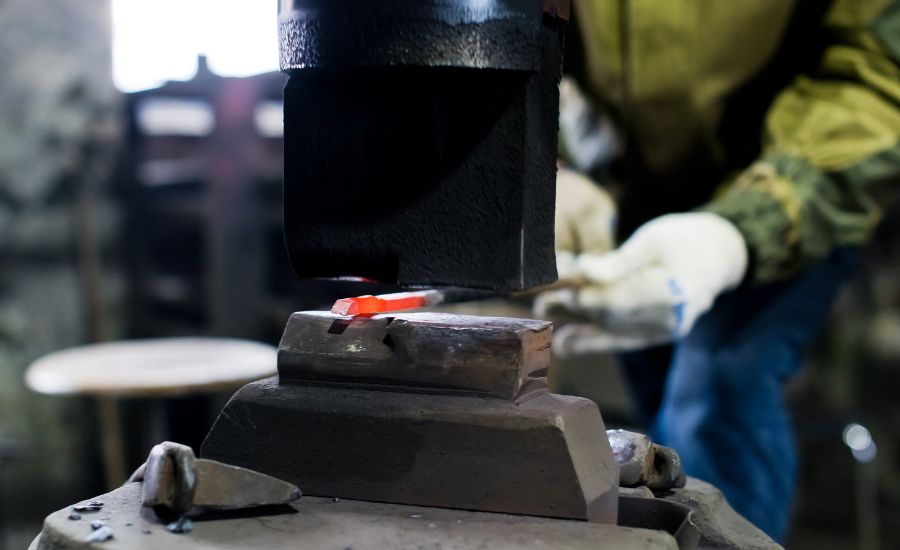
What are the advantages of forging?
High durability
Compared to cast or machined parts, forged parts have a much higher degree of durability. Smaller grains and grain flow that match the part’s geometry are characteristics of forged parts. The parts’ mechanical properties are uniform, and the shear and tensile strength improve as a result.
Components that have been forged exhibit excellent resistance to fatigue and creep resistance, which prevents deformation when exposed to high strains over an extended period. In a bid to enhance directional strength along stress directions and improved ductility, the grain flow is regulated. This also improves the materials’ resistance to fatigue and impact loads.
Forging additionally removes any interior air pockets or voids that may have been in the metal. As a result, it becomes stronger and has a homogeneous structure that is appropriate for machining operations as well as tempering, annealing, and normalizing which are kinds of heat treatment.
Forging is ideally suited to situations where great strength and dependability are essential because of its improved mechanical properties.
Minimal manufacturing expenses
Despite being considerably more expensive than the metal melting tools used for casting, forging equipment is suited for large-scale manufacturing units due to its cheap manufacturing expenses. By cutting out the demand for an expert operator, die forging lowers the cost of labor.
Moreover, the procedure is simple to automate, which further lowers operational expenses. By reducing flash development, closed die forging also saves material. Furthermore, The requirement for secondary machining operations is reduced or eliminated, which speeds up production and lowers costs.
Aside from that, the greater strength of forged components makes it possible to employ parts with smaller cross sections without running the danger of failure.
Moreover, because of their superior mechanical properties, forged parts have a longer useful lifespan. The total expenses incurred throughout their lifespan are reduced as a result of all these considerations.
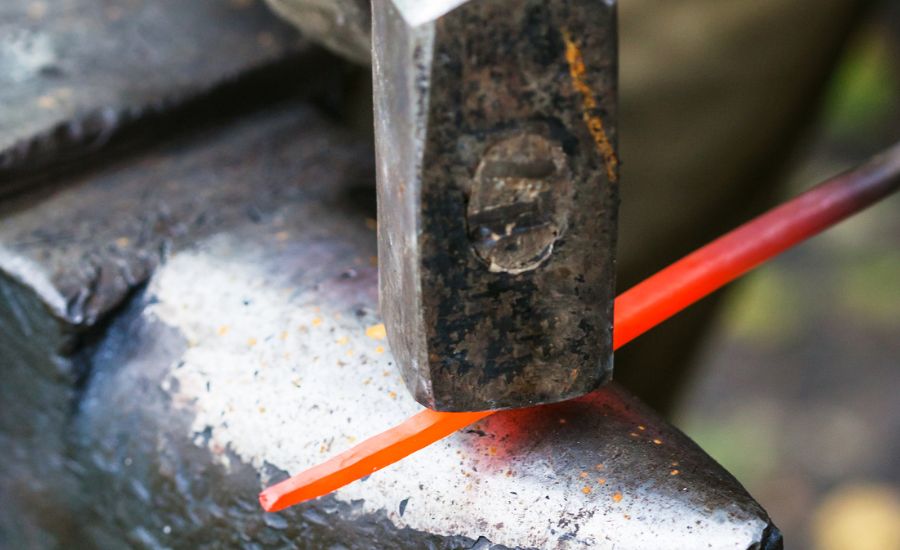
High-reliability
Forging is the best metalworking method for products where structural stability and safety are crucial since it is better compared to other metalworking processes such as casting. Because of the absence of flaws like voids or gas pockets, forged parts resist unexpected or sudden breakdowns under stress.
To guarantee the high reliability of the workpiece, you must be watchful of other forging flaws. By dispersing the material across all directions during the forging process, the stock’s chemical composition is also homogenized, increasing reliability.
The capacity to forecast how a forged component would react to different pressures is made possible by the homogeneity of mechanical properties across the entire workpiece, reducing the possibility of unanticipated failures and increasing reliability.
Versatility
The technique of forging is quite flexible, and it may be used to create a wide range of products, from parts with complex shapes to those with simple shapes like rings, shafts, and bars.
The ability to create unique single-body components with the versatility of forging increases the part’s durability.
Because of this, forged components are frequently employed in the production of basic hand tools as well as other sophisticated machinery for a variety of industries, including the aviation, automotive, and railway sectors.
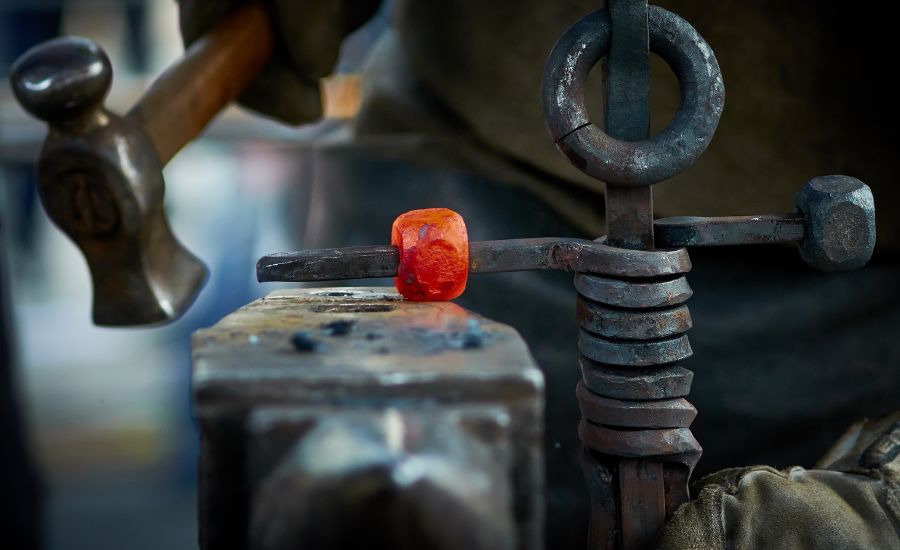
FAQ
What are advantages and disadvantages of forging?
Advantages
• The tougher final product. Generally, forging produces a tougher final product compared to casting. Particularly in terms of impact and strength characteristics. The metal’s grain flows are made to adapt to the shape of the product throughout the forging process, resulting in a tighter grain overall and a more uniform makeup and structure.
Because of this, forged objects are stronger and more resistant to wear. As a result, you may not need to make your parts stronger by using more expensive alloys.
• Higher structural integrity. The metal is less porous overall and experiences less shrinkage and voids during forging. You don’t have to make up for the several alterations that take place during casting.
• There are fewer flaws in the final product. The necessity to piece together various components is lessened through forging. Rather, it might all be forged as one unit. As no welding or attaching is required, eliminating unwarranted joints increases a piece’s total strength.
• It can be used in a wide range of sectors. In addition to minor equipment and objects like rivets, chisels, and screws, forged products also encompass everything from airplane landing rods to gears and crankshafts in trains and automobiles.
Disadvantages
It involves many stages. Most forged items require secondary operations to be finished and refined to specifications.
High tolerances are challenging to obtain. You may be required to forge items that adhere to strict tolerance levels and it can sometimes be difficult.
It is more expensive. A product will often cost more to forge than to cast. Forging involves using a great deal of powerful equipment. At the very least, you will require hammers and presses that can apply pressure to bend metals.
•These forging machinery and forging dies are large, potent, and expensive. If you’ll be forging hard metals, having heating furnaces big enough to accommodate the components is a requirement. Accurate engineering and heat-treating are needed if dies are going to be utilized in the forging process. They include considerable initial expenses as well.
It is still susceptible to various flaws. Although forging prevents shrinkage and minimizes porosity, it is susceptible to certain flaws, such as laps, piping, die failure, and improper grain flow.
Shapes are restricted. When undercuts or cored portions are required, the shapes of forged objects are constrained. Forging is also not a good option for products with very complex shapes.
What are the advantages of forging over casting?
Strength
For the same material and design, forged parts have the maximum strength and structural integrity, largely because of grain conformity. Casting can tolerate low shear and tensile stresses but not large shear loads, despite having superior compressive load resistance.
As forging creates products with enhanced strength than casting does, it is suited for load-bearing applications when evaluating the two processes.
Uniformity
Because forged parts have uniform properties over their whole cross-section, they are very dependable. The mechanical properties of cast products, on the contrary hand, are less homogeneous because of their porous structure and internal flaws including air gaps and inclusions.
Cost
The expenses can be split into two categories: initial costs and operational expenses. Casting equipment is far less expensive than forging equipment, which requires the largest initial expenditure to obtain heavy machinery.
However, for large-scale applications, where the expensive initial investment is offset by low manufacturing costs, forging is preferred to casting since its production costs are significantly lower.
In addition, by avoiding waste and drastically reducing cycle time, forging also lowers operational expenses. Casting, on the other hand, necessitates a lengthy cycle time and results in material waste in the form of machined fragments and undesired projections.
Material utilization
If you employ the appropriate metal melting equipment, hammers, and cutting tools, forging and casting can be used on nearly any metal. Nevertheless, forging maximizes the use of the metal by reducing the amount of scrap produced throughout the operation.
What are the advantages of forging vs machining?
Time
Compared to machining, requires less time. After little effort, the forged part will be usable making forging a very efficient process.
Strength
Because of the direction of grain flow and grain structure, the forged part has good strength compared to machine forging with inferior strength. By addressing workpiece flaws including porosity, cracks, shrinkage, and inclusions, forging enhances the structural integrity of the component.
Costs
The quantity of trash generated in machining is more than in forging and this represents the real cost. Each fabrication involves the removal of metal, leaving behind shavings that are limited to being sold for scrap. This implies that if you’re manufacturing a lot of complex items with extra waste, production costs could pile up quickly.
A CNC machine is a complicated piece of machinery with numerous motors and moving parts. This indicates that operating the machine and performing routine maintenance, such as lubricating it and making frequent repairs, will raise operational expenses.
Conclusion
Forging is an ancient manufacturing process. Its continued use in the present industrial era is evidence of its worth. The level of strength and relative ease of manufacture of a forged component has not yet been matched by any other manufacturing method.
Forging remains one of the most dependable and cost-effective solutions for manufacturing companies, despite the high starting costs for setting up the necessary equipment.


